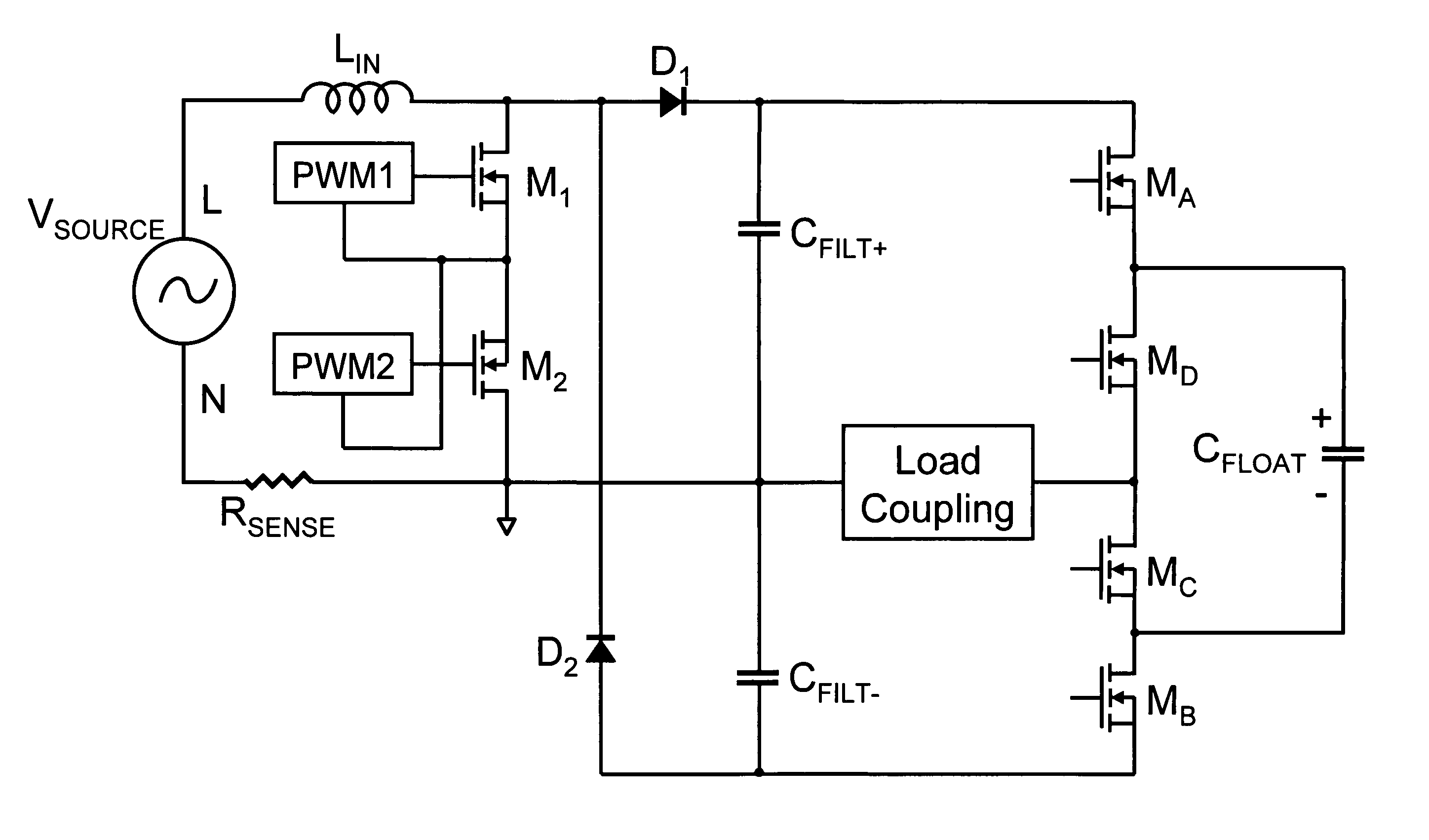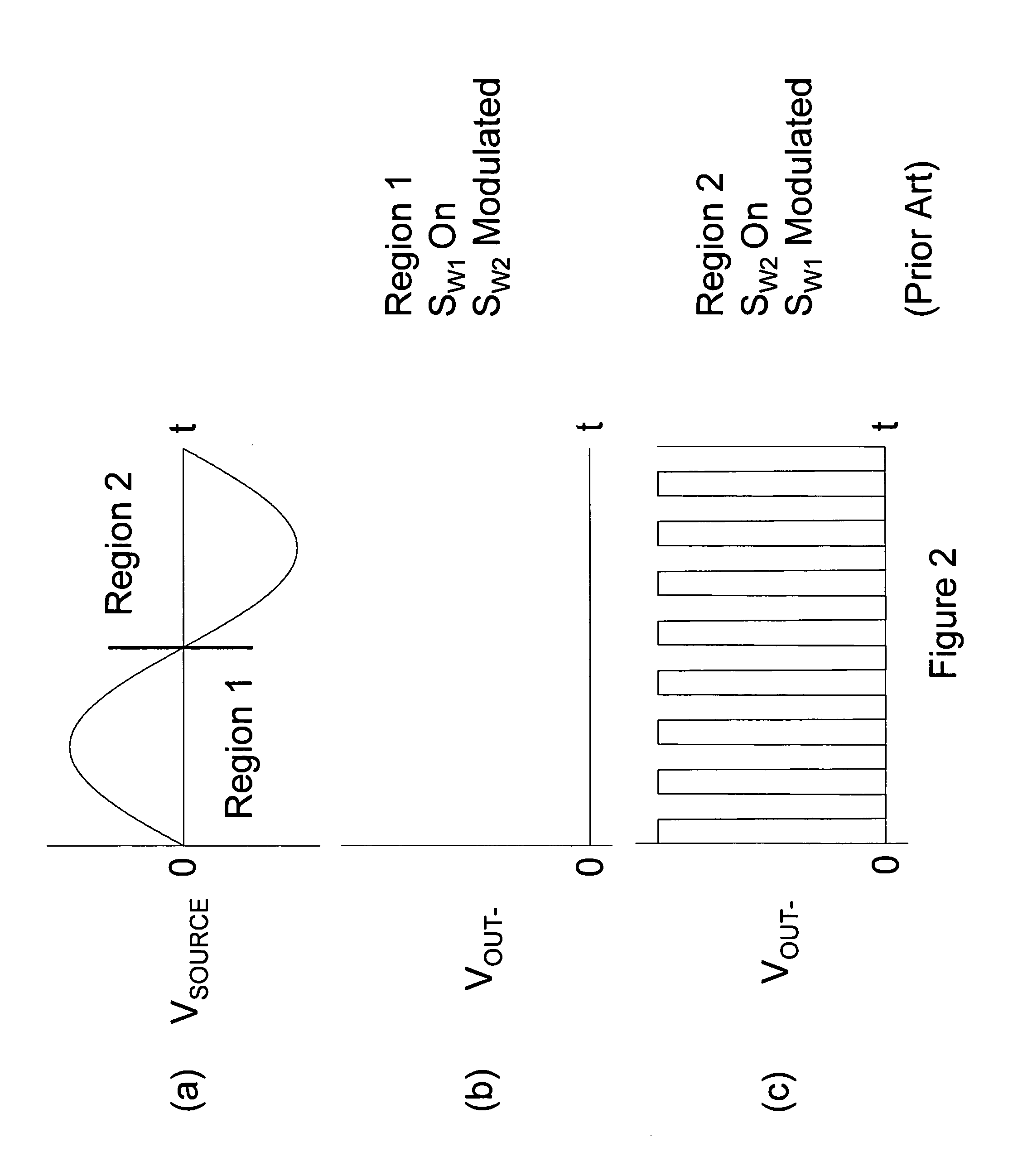Power converter circuits having bipolar outputs and bipolar inputs
a power converter circuit and output filter technology, applied in power conversion systems, climate sustainability, instruments, etc., can solve the problems of increasing the current, power and thermal stress of the output filter capacitor, reducing the efficiency of the converter, so as to achieve good cm noise performance, simple current sensing mechanism, and high efficiency
- Summary
- Abstract
- Description
- Claims
- Application Information
AI Technical Summary
Benefits of technology
Problems solved by technology
Method used
Image
Examples
Embodiment Construction
[0060]FIG. 5 illustrates an ac input bipolar output boost converter according to the subject invention. In FIG. 5 an input series network comprising an ac source of voltage, current, and power, VSOURCE, is connected to an input series inductance, LIN. LIN may be either a discrete series inductor or an inherent series inductance of the source of ac power. A first terminal of the series input network is connected to an output neutral terminal. A first main terminal of a switch SW is connected to a second terminal of the input series network and a second main terminal of switch SW is connected to a first terminal of the input series network. An anode terminal of a rectifier switch D1 is connected to the second terminal of the input series network. A cathode terminal of D1 is connected to a positive dc output terminal. An anode terminal of a rectifier switch D2 is connected to a negative dc output terminal and a cathode terminal of rectifier switch D2 is connected to the second terminal...
PUM
 Login to View More
Login to View More Abstract
Description
Claims
Application Information
 Login to View More
Login to View More - R&D
- Intellectual Property
- Life Sciences
- Materials
- Tech Scout
- Unparalleled Data Quality
- Higher Quality Content
- 60% Fewer Hallucinations
Browse by: Latest US Patents, China's latest patents, Technical Efficacy Thesaurus, Application Domain, Technology Topic, Popular Technical Reports.
© 2025 PatSnap. All rights reserved.Legal|Privacy policy|Modern Slavery Act Transparency Statement|Sitemap|About US| Contact US: help@patsnap.com



